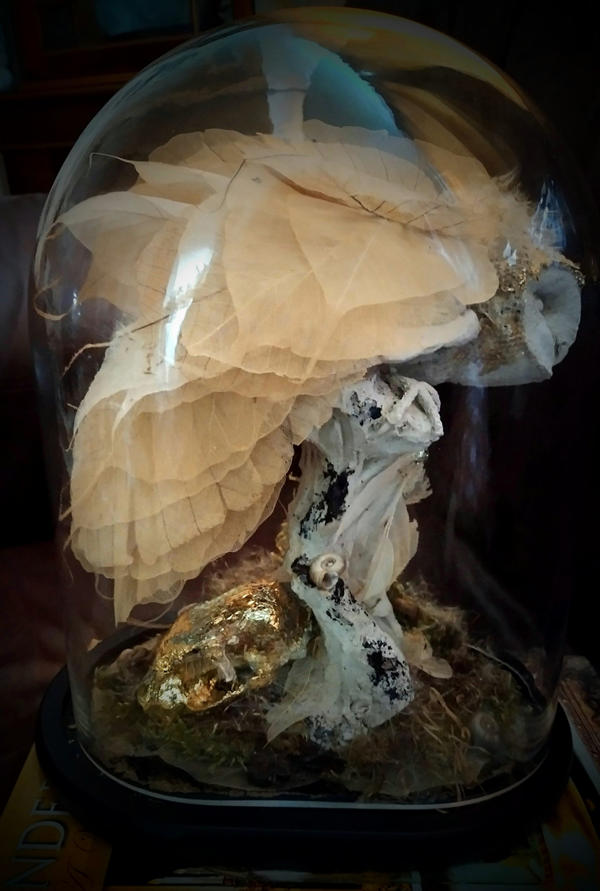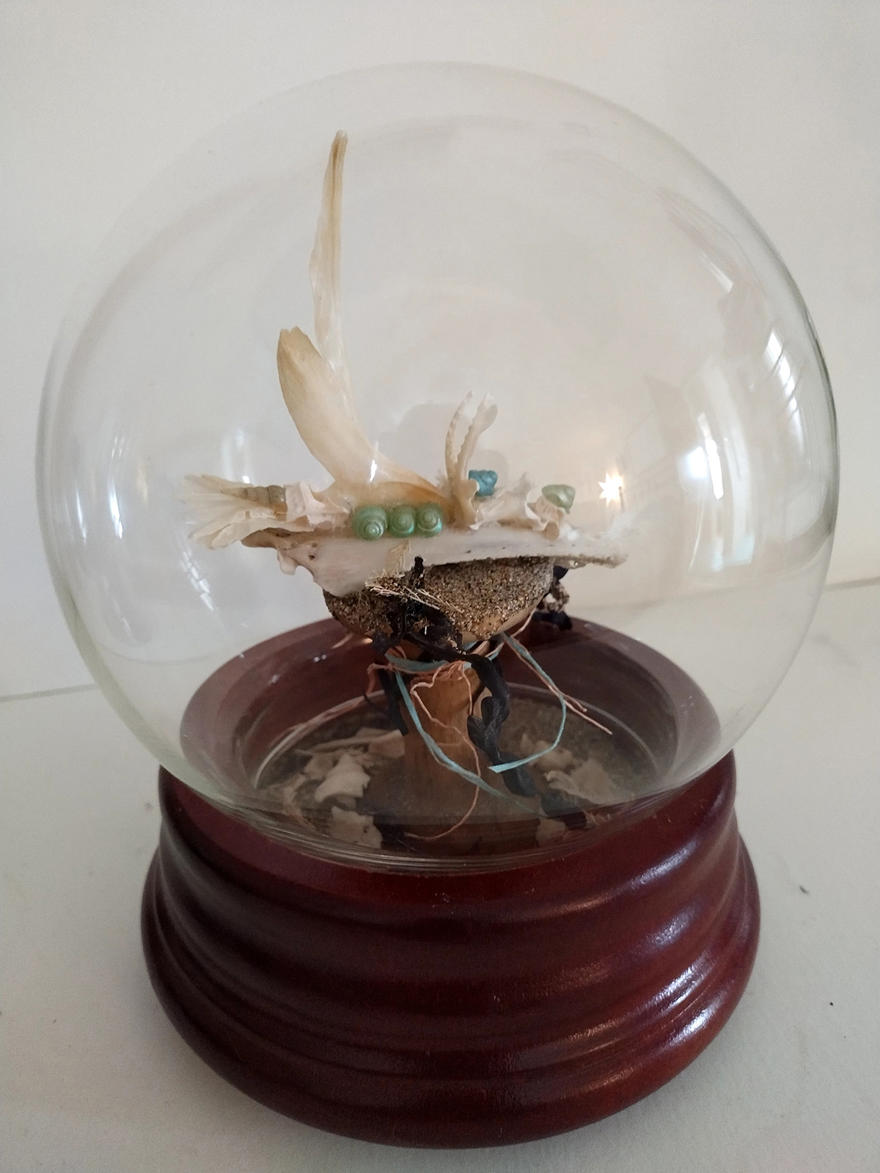A former University of Worcester art student is showcasing her Victorian-themed artwork in a free exhibition at The Hive.
 Photo of one of Alexandra Gordon's domes that will be on display - credit Alexandra Gordon
Photo of one of Alexandra Gordon's domes that will be on display - credit Alexandra Gordon
Alexandra Gordon will be displaying her latest collection, called 'Under Glass', a series of 13 arrangements inspired by the Victorian parlour domes.
Popular in people’s homes in the 19th century, the glass domes housed a wide-ranging miscellany of items, everything from shells to lobster claws, and were used as decoration in parlours, but also as a display of wealth. Alexandra’s own take on this practice will be on display on the library’s third floor, in the glass cabinets, until November 29.
“The domes all have a narrative, they all tell their own story,” she said. “I like people to look at things and contemplate their own meanings and thoughts and stories in them. I like people to look at my paintings and see what they want to and it’s same with the domes; they can make up their own minds about what they’re looking at.”
Alexandra graduated from the University – then University College Worcester - in 2002 with a BA (Hons) in Art & Design.
The fine artist undertook a number of research artist posts over the following years. The first was between the University and Worcester Cathedral in 2002/2003, then between the University and the Elgar Birthplace Museum a couple of years later. She did a third posting with the Worcester Museum and Art Gallery from 2009 to 2011 and discovered the museum’s back collection, which included many preserved artefacts of nature. “I fell in love with the collection,” said the 70-year-old, from Malvern. “That was the spark that led me to doing the domes.”
The domes are 15 years in the making. Much of the material used in them was collected on a visit to the Isle of Lewis, but other pieces are items that were collected by Alexandra while on walks or from charity shops over the years.

They include items found in nature, such as preserved butterflies, bees and other insects, animal bones, a bird’s nest and sand, but also manmade objects like discarded shoes and plastic toys, a broken garden ornament, tweed yarn and cotton reels.
“These are not things you can find and produce practically overnight,” she said. “You have to have that mindset that collects them and hangs on to them until such a time as they are useful. They’re items that I have liked the look of and thought I might use that in something, so I have kept them until they have come into their own and you don’t know when that’s going to be. It might be never, but it might be now.
“I hope that visitors look at the exhibition and enjoy what they’re looking at. Some people will like them, some won’t, but I suppose as with a lot of art it gives different people very different reactions to it and can promote debate and discussion.”
All images: credit Alexandra Gordon